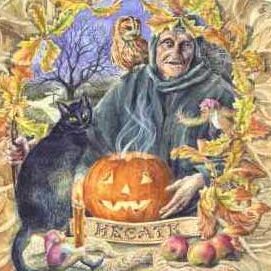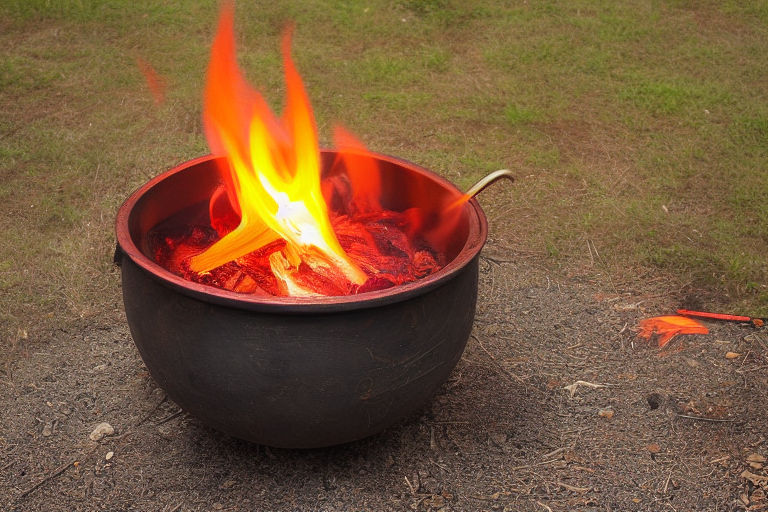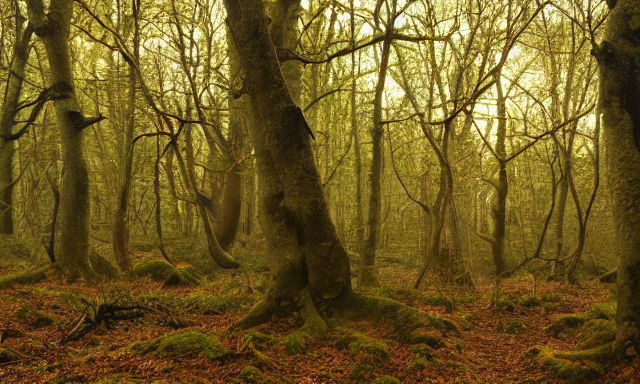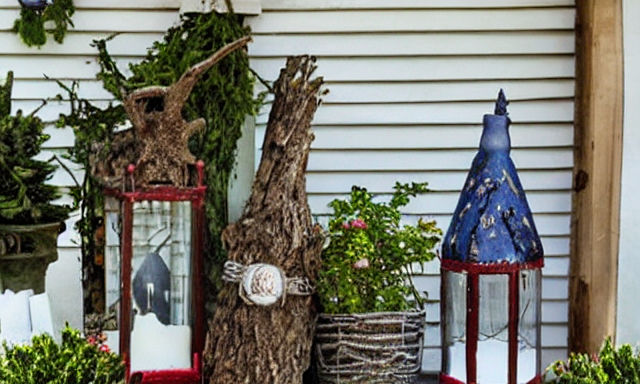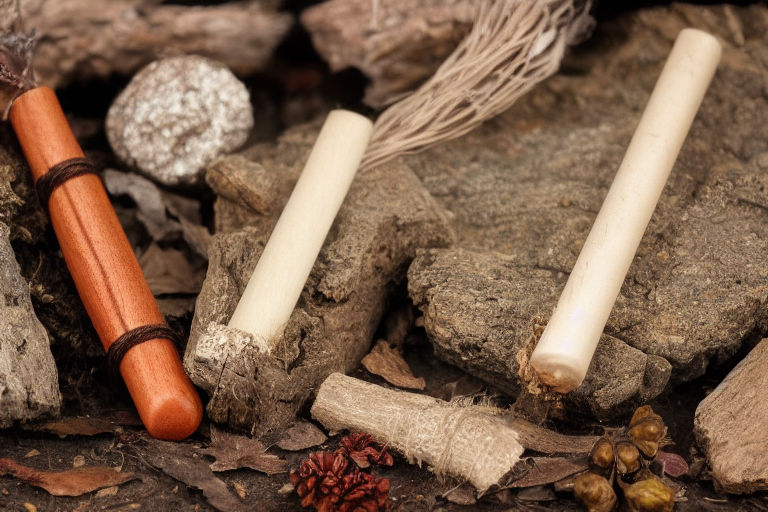Reasons Why Celts Leave Out Food During Samhain
In Celtic culture, the 24-hour festival from October 31 to November 1 signified the passage from light to darkness. It was a very important festival, considered to be more important than Imbolc, Lughnasadh, or Beltaine. Its significance stems from the belief that the dead were able to pass between the realms of the living and the dead.
Common Samhain Foods Apples - Apples are a traditional food for Samhain and are often used in divination and other rituals. Pumpkins - Pumpkins are a staple of autumn and are often used for carving Jack-o'-lanterns and as decoration. They are also used in cooking and baking, such as pumpkin pie. Squash - Like pumpkins, squash is a versatile autumn vegetable that can be used in a variety of dishes. Corn - Corn is a symbol of abundance and is often used in Samhain celebrations to honor the harvest. Grains - Grains such as barley, wheat, and oats are also associated with the harvest and are used in many Samhain dishes. Meat - Meat, particularly pork, is a traditional food for Samhain and is often served in stews or roasts. Bread - Bread, particularly dark or black bread, is a traditional food for Samhain and is often shaped into the form of animals or people to represent ancestors or deities. Cider - Apple cider is a popular drink for Samhain and is often spiced with cinnamon, nutmeg, and other warming spices. Nuts - Nuts, particularly hazelnuts and walnuts, are associated with wisdom and are often used in divination and other rituals. Mushrooms - Mushrooms are often harvested in autumn and are associated with the earth and the underworld. They are used in a variety of dishes, particularly soups and stews.
Gratitude
Throughout Celtic history, food has played a prominent role in Celtic festivals, including Samhain. This festival is rooted in the idea that food intoxicates all our organs. The Celts, who believed in the powers of gratitude, left food out during this festival as a gesture of gratitude to the spirits and to give thanks to the gods.
Samhain is the end of the old year and the beginning of the new. The Celts believed that the day began at sunset, and that light always came out of darkness. This darkness was full of potential. Samhain also serves as a time for us to reflect on the past and dream of new beginnings.
Samhain is a time for honoring ancestors. You can do this in a variety of ways, but a common method is to place a picture of a departed loved one on an altar or other special place in your home. You can also invite their spirits to join you during a feast. Try to cook their favorite foods for them and remember to talk about them.
Samhain was a time when the harvest of crops was successful and cattle were prepared for the winter. In some Celtic cultures, Samhain also marked the slaughter of cattle. Warriors were not likely to be engaged in farming, but this could be a way for them to express gratitude for the food they had harvested.
The Celts also believed in Sidhs, or supernatural visitors that inhabited their worlds. In order to appease the Sidhs, the Celts sacrificed animals and crops to appease these spirits.
Solace
The ancient Celts left offerings for the witch, Pukah, on the table during Samhain. The witch is thought to be mischievous, and so food left unharvested was considered a tribute. In addition, some farmers would leave their produce unharvested for Pukah. However, the legends surrounding Pukah are often contradictory. Some say she is evil, while others claim she is helpful. The name “Puck” comes from this deity.
This ancient Celtic custom dates back to over 2,000 years ago. The Celts regarded the year as being divided into two halves and Samhain marked the beginning of the dark half. It was also a time when the door between the living and dead was at its weakest.
The Celts also believed that the dead were comforted when food was left out for them. It is possible that these people had rituals to honor the dead, and the dead were often worshipped during Samhain. In ancient Celtic times, a large meal was eaten by the community, with additional food being set aside for ancestors. In addition to the feast, the Celts would set up altars and decorations. This was to appease the gods and protect the village inhabitants from winter.
Celtic folklore has several stories about food and the winter solstice, which marks the start of spring. The last of the harvest is left out, and the Celts used these last foods as a symbol of the coming spring. The Druids called this time Alban Arthuran, or Yule. They also believed that mistletoe wards off evil spirits and brings good luck.
While there are many traditions surrounding Samhain, the actual date is largely dependent on geographical location, spiritual tradition, and culture. Some Pagans celebrate Samhain over a few days, while others observe it on the closest weekend or the nearest Full Moon.
Fire
Samhain, the Celtic New Year, is a time to get in touch with nature. The ancient Celts celebrated Samhain to prepare for the long winter season. This holiday also marked the end of the harvest season, so it was a time of warm meals. To help you connect with nature during Samhain, decorate your home with fall foliage and produce.
As a part of the Samhain celebration, Celts will typically leave out bread on the table. Leaving out bread during Samhain is an ancient practice, and it demonstrates to the dead that their loved ones are still remembered. Whether you’re leaving out a piece of bread for your dead loved one or a dish of mashed potatoes, you’ll be showing them that you remember them.
Another reason for leaving out food during Samhain is to appease the spirits of the dead. This practice is also associated with fire, which was often used for sacrifices. In ancient Celtic times, people would also leave out offerings outside their homes and tables. They hoped this would discourage evil spirits from invading their homes.
Samhain is an ancient Celtic festival that is similar to our Halloween celebration. In ancient times, Celts celebrated Samhain to mark the transition from summer to winter. The transition between summer and winter marked the halfway point of the fall season, and the ancient Celts believed the dead could cross over into the realms of the living.
Apples were important for Samhain rituals. They held great symbolic significance, and were often associated with the realm of the spirits. They were one of the boundary trees in Celtic mythology, and their symbolism was especially relevant to Samhain rituals. Other foods associated with Samhain included hazelnuts.
Tradition of playing tricks
Samhain was traditionally a time for gathering together with family and friends, and it was also a time for preparing a spooky meal. Some families even invited their ancestors to join in the celebration. The ancestors were called “paucas,” and they would come to visit the home of the deceased to share their wishes. During this time, children and adults would play games to entertain them and share stories of the previous year. Some people even left open doors to the house to welcome the dead. Later, church leaders tried to reform Samhain and make it a Christian celebration.
This day was important to Celts because it marked the end of the harvest. As a result, the feast was usually composed of foods that were in season at the time. Because harvesting had ended, these foods would have been scarce during Samhain. Some cultures also ate meat as part of the feast, but this was only possible for herding communities, which would have slaughtered their livestock to survive the winter.

Traditionally, people in the British Isles would leave out plates of food during Samhain. This act was believed to please two spirits: appeasing the ghosts of recently deceased loved ones, and appeasing the evil spirits. Without food, the evil spirits would be more likely to play tricks.
Samhain is an ancient tradition that has lasted for many centuries. The Celts would gather around a communal village fire on the night of Samhain. They would then take a branch of that fire home to light their hearths. Many of them would also place communal fires all over their villages to guide the spirits home. This tradition is still used today.
Honoring ancestors
There are a few reasons why Celts leave food out during Samhain. Firstly, it’s a Celtic festival, and food plays a central role during such celebrations. Traditionally, Samhain rituals were a time of intoxication for all the organs of the body, including the digestive system.
Samhain also marks the beginning of the dark half of the year. In Celtic culture, the night represents the end of the harvest season and the start of the dark half of the year. Celts believed that the sun started the day at sunset, and that light always comes out of the darkness, making this time of the year a time for contemplation and dreaming of new beginnings.
However, this ancient festival has been altered over the centuries by the Roman Catholic church. Around 988 AD, the church created All Soul’s Day as an alternative to Samhain. People celebrated this day with bonfires and mass, and they would also parade through the village dressed as saints and angels.
The Samhain ritual also involved the cooking of a bread called bannock. In Ireland, this bread was traditionally loaded with trinkets. The woman of the house would bake it, and add the trinkets, such as coins or sticks, to it. Each item held a symbolic meaning and predicted a person’s fortune in the coming year. For example, a coin would mean wealth and a stick meant an unhappy marriage. A cloth was symbolic of poverty. It was a communal activity, and the bread would be prepared with the help of a group of girls.
Apples were also used in the Samhain ritual. The apple is a sacred tree, and it is also one of the boundary trees of Celtic mythology. Its symbolism is especially relevant during Samhain rituals. Hazelnuts and chestnuts were also used in Samhain rituals.
Samhain, an ancient Celtic festival celebrated on the eve of November 1st, marked the end of the harvest season and the beginning of winter. It was a significant and sacred time for the Celts, who believed that during this transitional period, the boundary between the living and the spirit world was blurred. As a part of their elaborate Samhain celebrations, the Celts had unique customs, including leaving out food as offerings. In this article, we will delve into the reasons behind this intriguing practice and explore the significance of ancient Celtic foods during Samhain.
Ancient Celtic Foods: Nourishing the Body and Soul
Celtic Foods
To understand the practice of leaving out food during Samhain, we must first explore the dietary habits of the ancient Celts. The Celts were skilled farmers and herders, relying heavily on the bounty of the land for sustenance. Their diet comprised a variety of foods, including grains, vegetables, fruits, dairy products, and meat from livestock.
The Celts had a deep connection with nature, and their food choices were influenced by the changing seasons. During Samhain, as the harvest season came to a close, they gathered the last of their crops and prepared for the colder months ahead. This time of abundance and gratitude for nature’s gifts was an essential aspect of the Celtic way of life.
The Significance of Samhain Foods
Samhain was a time of reverence for the cycle of life and death, and the Celts believed that the spirits of their ancestors returned to the earthly realm during this period. To honor and welcome these departed souls, the Celts prepared lavish feasts, setting out plates of food as offerings.
The food offerings served multiple purposes. First and foremost, they were a gesture of gratitude and respect towards the deceased ancestors, acknowledging their role in the family and community’s well-being. The Celts believed that by offering food, they could nourish the spirits and ensure their continued presence and protection in the family’s life.
Strengthening the Connection Between Worlds
The ancient Celts had a profound belief in the interconnectedness of all living beings and the spiritual realm. Leaving out food during Samhain was an essential ritual to strengthen the connection between the living and the dead. By sharing a meal with the spirits, the Celts sought to maintain harmonious relations with the spirit world, seeking blessings and guidance from their ancestors.
The food offerings were believed to act as a conduit, allowing the living and the deceased to share in the sustenance and blessings of the harvest. It was a symbolic act of hospitality, emphasizing the enduring bond between the living and their ancestors, as well as the continuity of life across generations.
Symbolism and Protection
Beyond its spiritual significance, leaving out food during Samhain was also seen as a means of protection. The Celts believed that during this liminal period, not only benevolent spirits but also malevolent entities roamed the earthly realm. By offering food to the spirits, they hoped to appease any restless or troubled souls and prevent them from causing harm or mischief.
The food offerings were considered a form of symbolic currency in the spirit world, acting as a means of payment or exchange for protection and goodwill. This practice brought a sense of comfort and security to the Celts, knowing that their ancestral spirits were watching over them during this time of heightened vulnerability.
Samhain Meals: A Celebration of Life and Death
Festive Feasting
Samhain was a time of celebration, and the Celts spared no effort in preparing sumptuous meals for the occasion. The feasts consisted of a wide array of dishes, reflecting the abundance of the harvest season. Foods such as roasted meats, hearty stews, root vegetables, fruits, and grains graced the tables.
The act of sharing a communal meal during Samhain was a way for the community to come together, strengthening bonds and fostering a sense of unity. The feasting was a joyous occasion, filled with laughter, music, and storytelling, as the Celts celebrated the cyclical nature of life and the eternal connection between the living and the dead.
Ancestral Recipes and Traditions
During Samhain, the Celts cherished traditional recipes that had been passed down through generations. Each dish carried with it the memories and wisdom of their ancestors, linking the present to the past. Foods prepared with love and care were believed to resonate deeply with the spirits, reinforcing the ties between the living and their forebears.
The act of cooking and sharing ancestral recipes was a way for the Celts to honor their lineage and embrace their cultural heritage. It allowed them to connect with their roots and maintain a sense of continuity and belonging in the ever-changing world.
Remembering the Departed
Samhain was also a time for personal reflection and remembrance. In addition to the communal feasts, families set aside a portion of food specifically for their deceased loved ones. These offerings were placed on altars or at the doorstep, inviting the spirits of the ancestors to partake in the festivities.
Remembering the departed in this manner allowed the Celts to celebrate the memories and contributions of those who had passed on. It was a time to honor their legacy and express gratitude for the wisdom and guidance they had imparted during their lifetimes.
The practice of leaving out food during Samhain was a sacred and meaningful tradition for the ancient Celts. It was a time to honor their connection to the spirit world, express gratitude for nature’s abundance, and celebrate the cycle of life and death. The food offerings served as a bridge between the living and the dead, nurturing the spiritual bond that transcends time and generations.
As we celebrate modern-day Halloween and embrace its ancient Celtic origins, let us remember the profound significance of the Samhain foods. They are not merely a part of a historical custom but a reminder of the enduring human desire to connect with our ancestors, celebrate life’s bounty, and find comfort in the knowledge that our loved ones continue to watch over us from the realm of spirits.
As we honor the traditions of the Celts and reflect on the spirit of Samhain, let the act of sharing food be a reminder of the unbroken chain that links us to our ancestors and the beauty of the cyclical nature of life. May the practice of leaving out food during this sacred time inspire us to embrace the interconnectedness of all living beings and find solace in the eternal embrace of our loved ones, both past and present.


